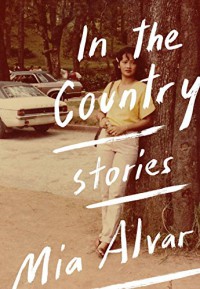In the Country by Mia Alvar

This is a brilliant story collection, full of tales from the Philippines and their diaspora. The author is one of those literary writers who does a fantastic job at creating characters, with distinct personalities and psychological complexity, in just a few pages. The stories tend to focus on the characters’ personal journeys, and are sometimes quietly brutal, but stand out for the vividness of the characters and of the author’s imagery. I finished this a couple of weeks ago, and took my time reading it, but most of the stories still stand out clearly in my mind. The author’s writing is also excellent, and has a certain weight to it that will keep you from breezing right through: every word has meaning and is there because it needs to be. It’s by no means dense, but it’s solid literature, the kind of writing that loses nothing when you re-read it.
Because I often look for others’ reactions to specific short stories as I finish them, here are my mini-reviews, in order of appearance:
“The Kontrabida”: A young man working in New York returns to the Philippines to visit his abusive father, who is seriously ill, and his apparently saintly mother. To my mind this is one of the best in the collection, deliberate and atmospheric, with a whammy at the end.
“The Miracle Worker”: A young special ed teacher, living in Bahrain with her husband, is approached by a wealthy Arab woman who has unrealistic dreams for her severely disabled child. This is also one of the best, complex and surprisingly dark, leaving a certain awful secret to be fleshed out by the reader, and with a final image that stuck with me long after finishing.
“Legends of the White Lady”: An American model with some personal issues visits the Philippines for a shoot. My least favorite of the collection, this story is lightweight compared to the rest, but it still feels grounded in authentic experience.
“Shadow Families”: A community of newly-well-off Philippine wives in Bahrain includes less-fortunate immigrants from their country in social events, but these include a challenging young woman who’s more interested in their husbands than their friendship. This story is told in the first-person plural – there’s a “we” but no “I” – and none of the many wives included in that “we,” or their husbands, really stand out. Meanwhile, it goes on too long, as if an epilogue had been appended to a short story.
“The Virgin of Monte Ramon”: A boy in a wheelchair befriends a girl from the local shantytown and learns a disturbing secret about his own family. This is a perfectly fine story, though not my favorite.
“Esmeralda”: A cleaner in New York, who works hard but has a difficult life, falls for a lonely banker in the World Trade Center when she cleans his office. This one is told in the second person, which I usually hate and which literary writers seem to need to get out of their systems . . . but the story is strong enough to shine despite that (or perhaps even because of it). It’s vivid, memorable, and does a great of splicing together different timelines even in a short space.
“Old Girl”: Set in Boston, this is taken from the life of Corazon Aquino, who became a major figure in Philippine history, though you might not have guessed it from the meek wife here who caters to her flamboyant and ambitious husband. You don’t need to know anything about her to make sense of the story (though if you do, it won’t spoil the story and will add resonance to it). The family dynamics are carefully observed and the characters have no less complexity than if the author had had free rein to create them herself.
“A Contract Overseas”: A college student from an impoverished family is supported by her beloved brother, who takes a job in Saudi Arabia, but she can’t save him from his own problems. This is a vivid story with strong characters and realistic emotions, but I wanted a little more from the end.
“In the Country”: At about 85 pages, this is closer to a novella than a short story. It switches between two timelines – a young nurse who fights for better pay and marries an ambitious journalist, and that same woman later, after a devastating loss. This story fleshes out a lot about the recent history of the Philippines, and provides the context for “Old Girl.” It is quite good; the history perhaps overshadows the characters at times, but it’s fair to say that the two can’t be entirely separated for people whose lives are so tied up in history.
Overall, this is a great, well-written, well-observed collection of stories. I am definitely interested in reading more from this author.





